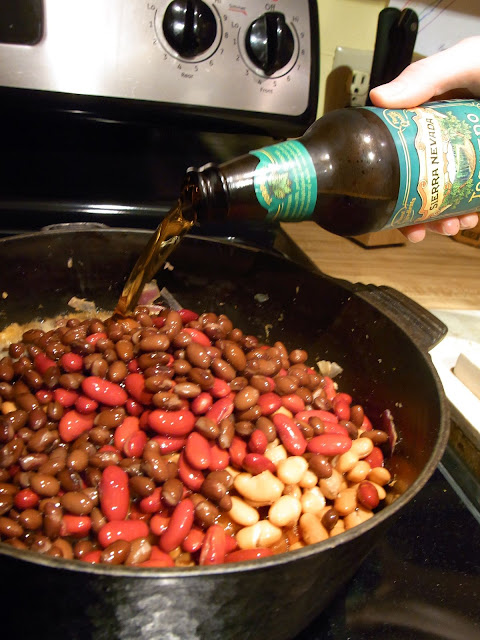Grândola is a small town about one hour south from Lisbon, located in the beginning of the Alentejo region, and well known for the song that Zeca Afonso composed during the dictatorship. Near the highway on the way to Algarve, less than a mile before Grândola, you’ll find a the restaurant called “A Lanterna”. I went there for the first time in 2001 and since then every time it’s possible, I go back. I’ve taken dozens of people with me and they all thank me very much in the end. Alentejo is a region well known for it’s amazing traditional food and tremendously good wine and this restaurant offers a good sampling of the region.
On their menu you can find a lot of the northern Alentejo traditional recipes, from the wonderful Migas and Açorda, to Carne de Porco à Alentejana, and the list goes on. I've tasted a few of them and my favorite dish is still the Arroz de Feijão com Bacalhau e Espinafres (translated crudely it's rice with beans, cod and spinach). I've never found it anywhere else and I have attempted to replicate it many times. No matter my method, it's never tasted like the original but everyone seems to like it.
In addition to their amazing entrees, the starters they bring to the table immediately after you sit are also extraordinary and include the region's traditional bread. The portions are generous so there is always plenty to share with your company. The wine selection is superb and inexpensive.
This recipe is my humble attempt and interpretation of the restaurant's dish. I've never had the guts to ask them how it’s done, even if after all the times I’ve been there, so here goes.
Ingredients:
Red Beans (already cooked)
Olive Oil
Salt
Pepper
Chili peppers
Onion
White wine
Garlic
Bayleaf
Tomato sauce
Rice
Spinach
Salted Codfish
Welcome to the flavors of Alentejo.
Arroz de Feijão is a side dish that you can find all over Portugal. It’s basically a big watery bean sauce that you cook the rice in. This recipe also adds spinach and slices of salted cod fish cooked in the sauce. It sounds simple but the result is much more than that.
To make the rice, start the sauce by sautéing in olive oil some onions, garlic, bayleaf and add a bit of salt and pepper. A few minutes later, add a a little bit of tomato sauce and let it simmer. Add some white wine to make it saucier, and a bit of water if needed. You’ll need to make enough sauce to cook not only the beans but also the rice and the codfish. This is the tricky part because you don't want too much or too little liquid, so cook it slowly on a low temperature while keeping the lid on as much as possible.
Once the sauce has reached a good consistency -somewhat thick but liquidy enough for the rice- add the beans so that they can start melding with the flavor of the sauce. After a while add the salted codfish, already watered (soaked) and cut in small pieces. You should get the cod in small-medium pieces with your hands, removing all the fishbones you can. Let it boil for 10 minutes and add water or white wine if needed.
Add some water before you put the rice in. Depending on the type of rice (white, brown, etc) you’re using you’ll need more or less time to cook it. but try to add the spinach only once the rice is almost done. It doesn't need more than 10 minutes to be cooked.
Garnish with cilantro and let it rest in the pan for about 5 minutes before serving.
Bom apetite!
The night’s selection:
The wine from Alentejo is strong and good, just like the hot sun that heats the region with temperatures over 90ºF during the summer. It’s perfect to go with full flavored food, just don’t forget to have some water, too.
For this dish we chose the white Pêra Manca from Quinta da Cartuxa, a white with a strong character that could easily be your best pal on any summer day. The varietals include the local Antão Vaz and Arinto. The blend is complex and fruity with a bouquet that is persistent and refreshing.
It’s hard to think about Grândola without recalling José Afonso's “Grândola, Vila Morena” which was the song that symbolized the Carnation Revolution that ended after 40 long years of dictatorship and 20 years of a bloody war in Africa. The song was released in the 1971 album, “Cantigas do Maio” and it’s a symbol of the peaceful revolution that changed the life of the Portuguese. This meal might not change your life but it will make your tummy smile.


























































